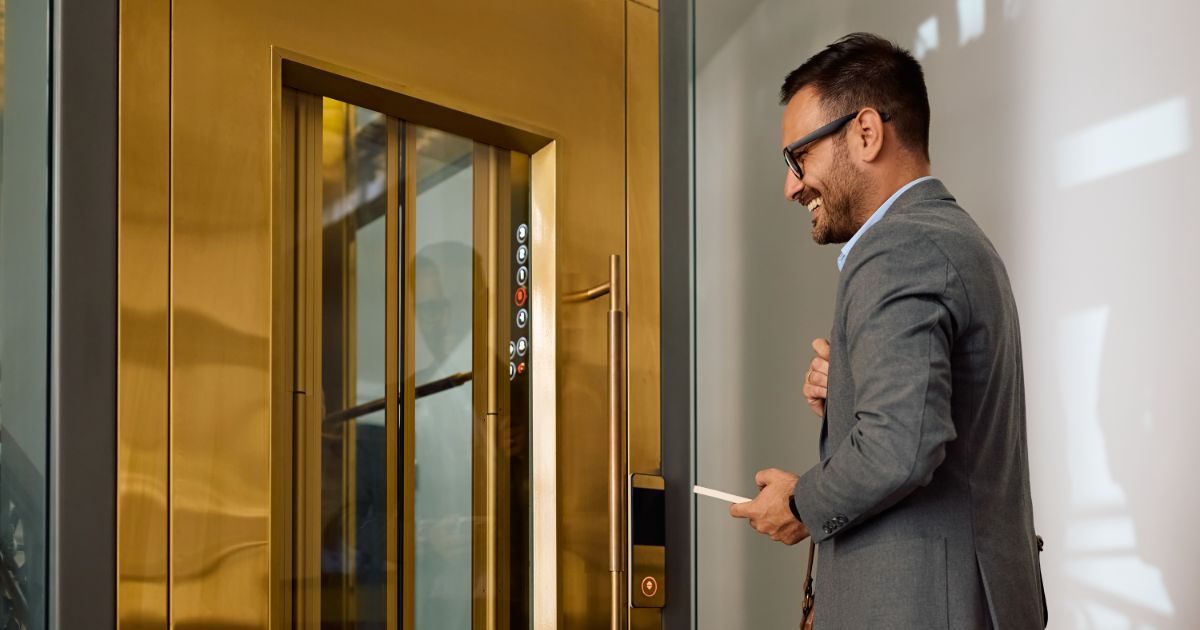Elevator modernization is upgrading an elevator’s critical components to improve its performance, safety, and reliability. It’s important because it makes sure the elevator meets modern standards, reduces downtime, and enhances passenger safety and comfort.
As buildings age, elevators may struggle to keep up with the demands of daily use, leading to frequent breakdowns and increased maintenance costs. Modernization addresses these issues by updating old technology, ensuring elevators operate efficiently, comply with current safety codes, and provide a better experience for everyone using them.
Understanding Elevator Modernization
Elevator modernization involves replacing outdated parts such as controllers, motors, doors, or cab interiors with newer, more efficient technology. These upgrades can address frequent breakdowns, slow performance, or non-compliance with safety regulations.
Modernization is often more cost-effective than constant repairs for older elevators. It ensures the system can handle the demands of modern buildings, especially in high-traffic areas like offices or residential complexes.
Benefits of Elevator Modernization
Upgrading your elevator provides several significant advantages:
- Enhanced Safety: Modern systems include updated safety features, such as advanced braking systems and emergency communication tools.
- Improved Performance: Faster and smoother rides reduce passenger waiting times and enhance user experience.
- Energy Efficiency: Newer components consume less energy, lowering utility costs and supporting eco-friendly initiatives.
- Compliance with Codes: Modernization ensures your elevator meets local building codes, including accessibility and safety standards.
- Aesthetic Appeal: Refurbished cab interiors can improve the overall look and feel of your building.
Signs Your Elevator Needs Modernization
How do you know it’s time to upgrade? Look for these common signs:
- Frequent Repairs: If breakdowns are becoming regular, modernization might be a better investment than ongoing maintenance.
- Slow or Erratic Operation: Older systems may have difficulty meeting daily demands, causing delays or uneven rides.
- Obsolete Technology: If parts are difficult to source or the manufacturer no longer supports the system, it’s time for an upgrade.
- Safety Concerns: Compliance with newer safety standards, such as the Florida door lock monitoring deadline, is critical.
- High Energy Costs: Inefficient motors and outdated systems can drive up your building’s energy consumption.
Steps Involved in Elevator Modernization
The modernization process typically includes the following steps:
- Assessment: A professional evaluates the current condition of your elevator to determine which components need upgrading.
- Planning: The modernization team creates a detailed plan, including timelines, costs, and specific upgrades.
- Execution: Old components are replaced or refurbished with minimal disruption to building operations.
- Testing and Compliance: The upgraded elevator undergoes thorough testing to meet all safety and performance standards.
Final Thoughts
Elevator modernization is critical to your building’s safety, efficiency, and value. Upgrading outdated systems can reduce maintenance costs, improve performance, and ensure compliance with modern safety standards.
FIJI Elevator specializes in elevator modernization and can help you upgrade your system to meet today’s requirements. Whether you need assistance with inspections, compliance, or complete system overhauls, our team is ready to provide exceptional service with a friendly touch. Contact us today to learn how we can keep your elevators running smoothly and safely.

